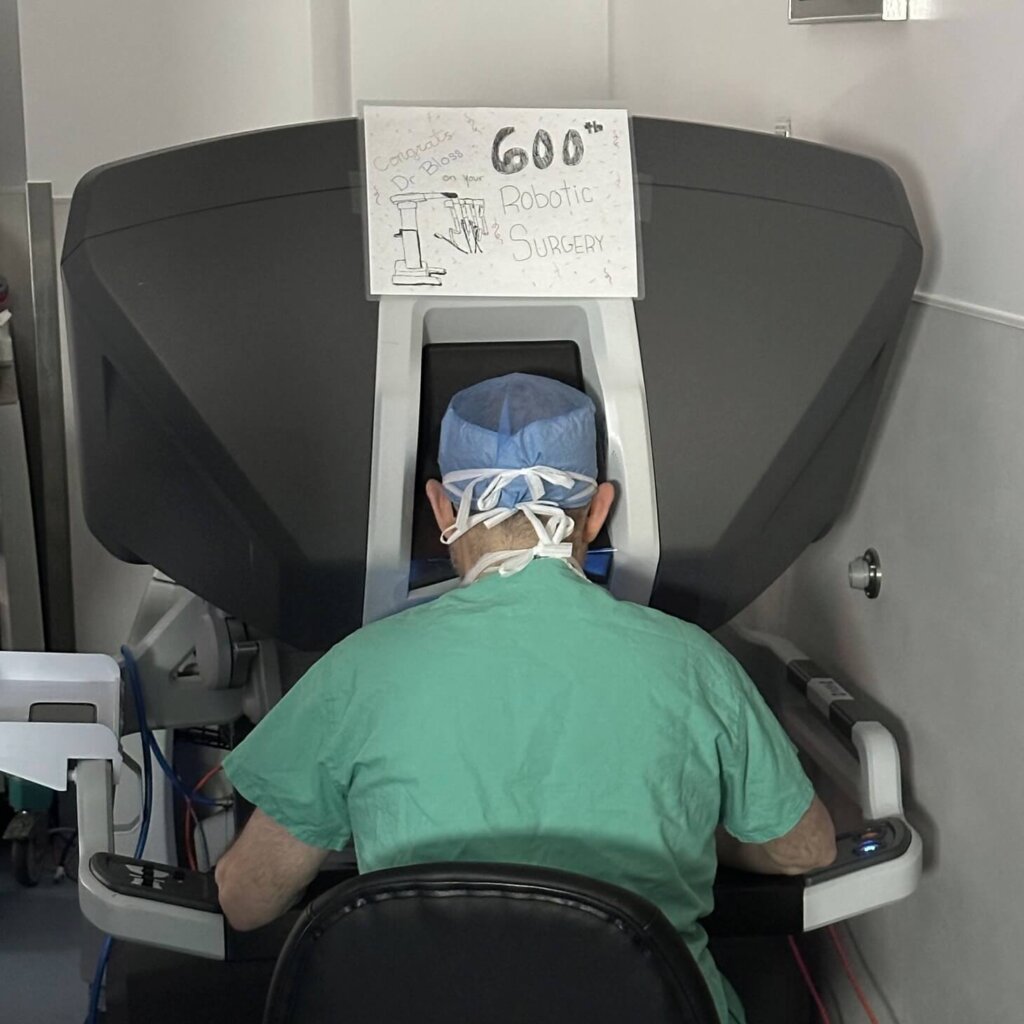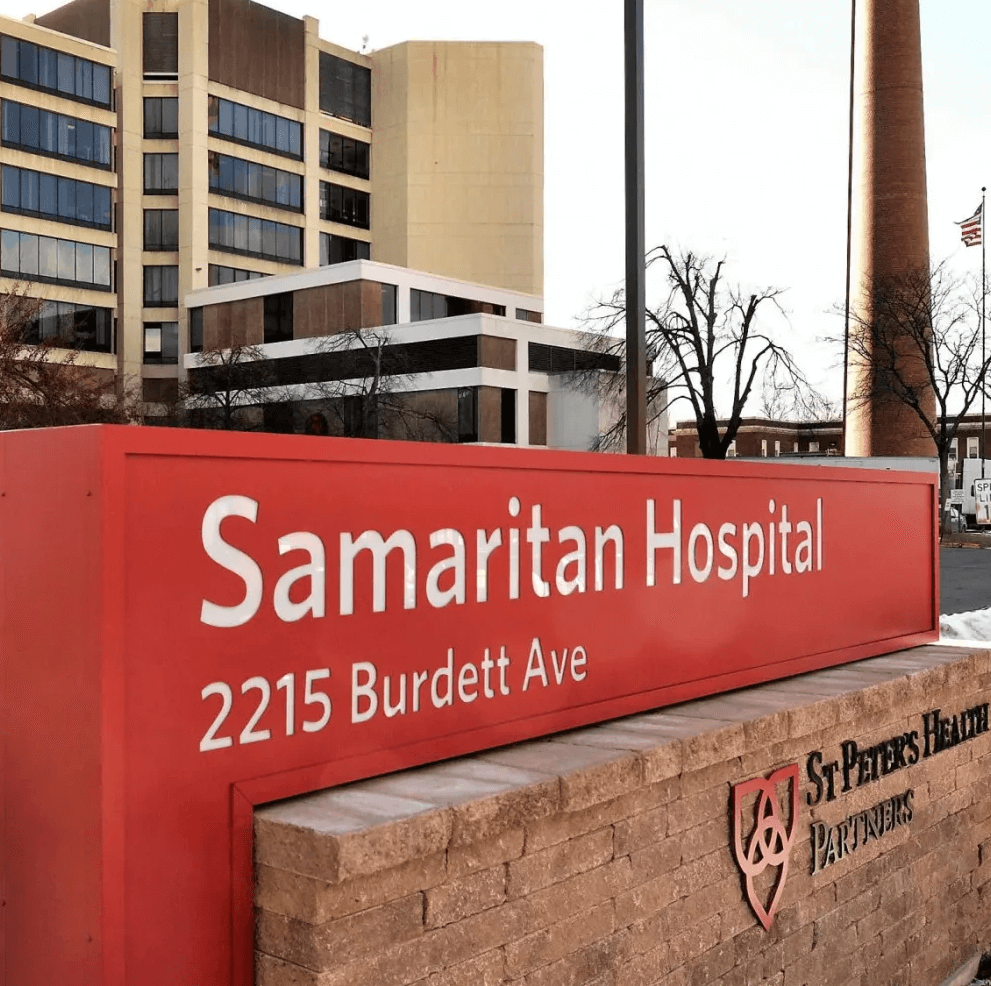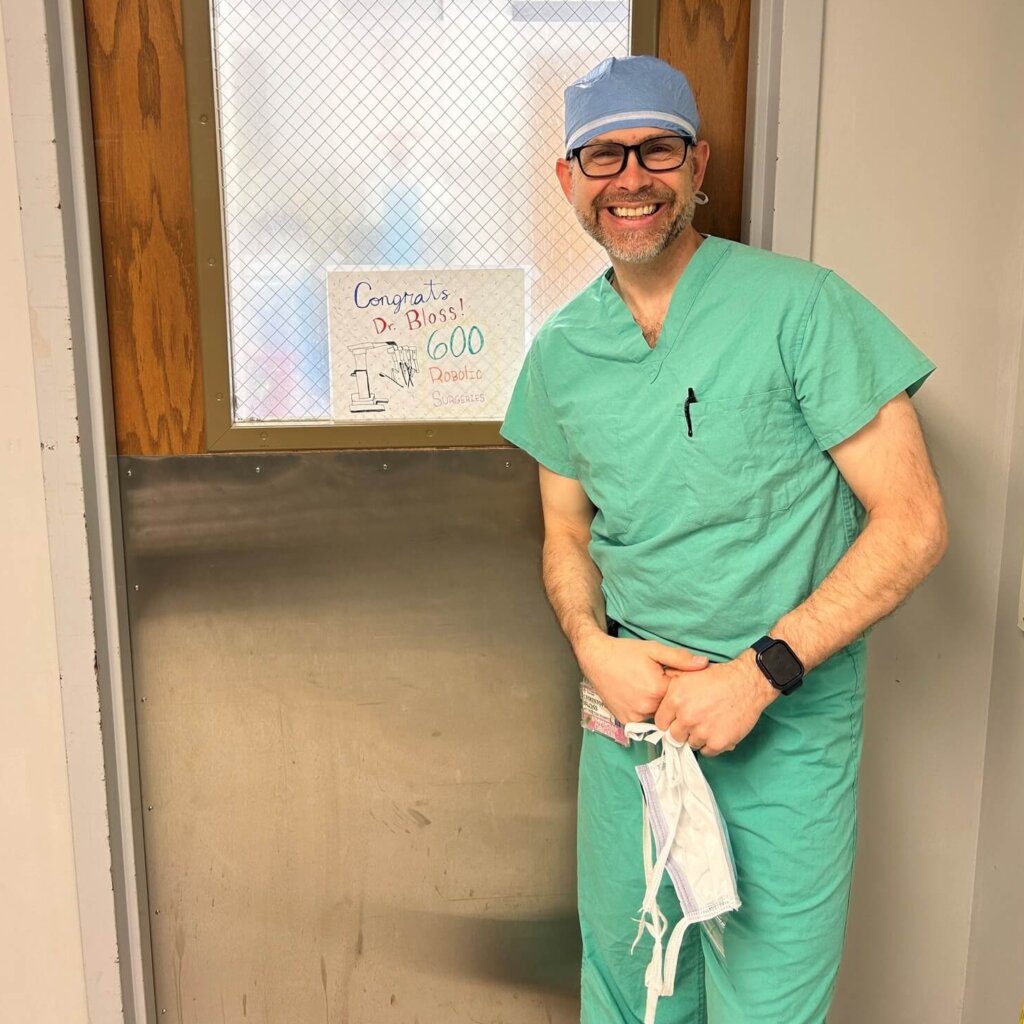
At Capital Region Women’s Care, Dr. Christopher Bloss brings advanced training and expertise in gynecologic robotic surgery. Utilizing state-of-the-art technology for minimally invasive procedures, we effectively treat cancer and other gynecologic conditions while minimizing physical stress and recovery time for our patients.
What is Robotic Surgery?
Gynecologic robotic surgery is one of the most advanced forms of minimally invasive surgery, offering a precise and effective option for treating a range of conditions affecting a woman’s reproductive organs. Unlike traditional open surgery—which requires a large incision—or standard laparoscopic surgery where the surgeon manually operates instruments through small incisions, robotic surgery allows the surgeon to control specialized, miniaturized instruments through a computer-assisted robotic system.
At Capital Region Women’s Care, our skilled surgeon, Dr. Bloss, has extensive training in robotic gynecologic procedures. Working from a console in the operating room, Dr. Bloss uses a high-definition 3D camera and robotic arms to perform delicate procedures with enhanced visualization, dexterity, and precision. Typically, only four to five small (8mm) incisions are needed. The abdominal cavity is gently expanded using carbon dioxide gas to provide working space, and the patient is placed under general anesthesia for comfort and safety.
Our team’s expertise in robotic surgery enables us to treat gynecologic cancers and other complex conditions while minimizing physical trauma, reducing recovery time, and improving overall surgical outcomes.

Robotic Surgery for Complex Gynecologic Conditions
Patients who are candidates for laparoscopic surgery may also be considered for robotic surgery, particularly when dealing with more complex or advanced conditions that benefit from greater precision and control. At Capital Region Women’s Care, our experienced gynecologic surgeon, Dr. Bloss, uses robotic-assisted techniques to treat a wide range of gynecologic conditions with exceptional accuracy and care.
Robotic surgery is often the preferred approach for procedures that require delicate dissection or access to difficult-to-reach areas. Dr. Bloss performs the following procedures:
- Oophorectomy (removal of one or both ovaries)
- Endometriosis evaluation and removal
- Myomectomy (removal of fibroids)
- Hysterectomy (removal of the uterus)

Key Benefits of Robotic Surgery
Robotic surgery offers several advantages compared to both open and traditional laparoscopic surgery, including:
- Reduced blood loss and decreased need for transfusions
- Less postoperative pain and discomfort
- Smaller incisions with minimal scarring
- Lower risk of infection
- Greater surgical precision and control
- Faster recovery and earlier return to daily activities or work
- Shorter hospital stays
These benefits contribute to an overall smoother and more efficient healing process, helping patients get back to their normal routines more quickly.
Quick Recovery and Support After Robotic Surgery
Recovery following robotic surgery is generally comparable to that of traditional laparoscopic procedures. Most patients are able to return home the same day as their surgery, provided they meet basic discharge criteria—such as having well-managed pain and successfully urinating after the procedure.
Compared to open surgery, minimally invasive robotic techniques typically lead to faster healing, less discomfort, and a shorter recovery period. Patients are usually encouraged to begin walking the evening of their surgery and continue gradually regaining strength in the days that follow. Depending on the specific procedure performed, most individuals can expect to return to their normal activities within two to six weeks.
At Capital Region Women’s Care, we ensure that patients discharged after surgery receive clear post-operative instructions and have access to direct support for any urgent concerns that may arise during recovery.
